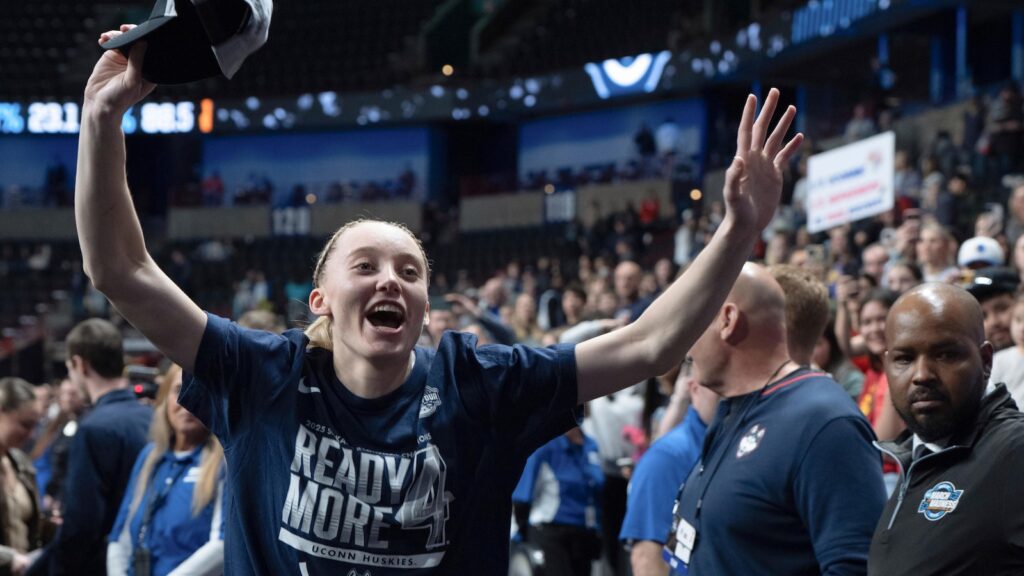Paige Bueckers: A New Era for UConn Women’s Basketball
Paige Bueckers is poised to make history as the first WNBA No. 1 overall draft pick from the University of Connecticut since Breanna Stewart nine years ago. Both athletes have emerged as undeniable stars during their college careers, establishing themselves as UConn legends while each advancing to four Final Fours.
NIL Era: Transforming College Sports
While Stewart began her career without any financial compensation, Bueckers has become a financial powerhouse, leading UConn to the Final Four for the second consecutive year, all while earning millions. She is not alone in this evolving landscape.
Draft Eligibility Differences
Unlike men’s basketball players who can enter the professional arena after just one year of college, women’s players face a different set of rules for draft eligibility. For example, Duke’s star freshman Cooper Flagg is projected to be the No. 1 pick in the upcoming NBA draft, having turned 18 just last December.
A Shift in Financial Dynamics
The disparities between the NBA and WNBA draft eligibility have historically limited the financial opportunities for female athletes. However, the advent of the name, image, and likeness (NIL) era in college sports has dramatically shifted this narrative. Bueckers, for instance, has secured lucrative sponsorships with brands like Nike and Gatorade while still proudly representing UConn.
A Coach’s Perspective
UConn’s coach, Geno Auriemma, has praised Bueckers, stating, “I think Paige is the poster child for how it’s supposed to be. She emerged at a time when players weren’t getting paid, and she established a standard that illustrates why athletes should be recognized for their talent.”
Age and Eligibility Requirements
To enter the WNBA draft, players must either complete their college eligibility as seniors or turn 22 during the draft year and relinquish any remaining eligibility.
No Rush for Change
Currently, there is little desire to change the eligibility rules for women’s basketball, primarily due to the existing salary structure. The top pick in the NBA draft can earn around $13.8 million in their rookie season, while the WNBA counterpart will receive approximately $78,831.
Staying in College: A Strategic Move
For many women’s players, remaining in college presents a wise business decision. Numerous NIL deals are expected to transfer with them to the WNBA. Yet, the financial incentives in the professional arena are not as substantial compared to the opportunities available in college. The maximum base salary in the WNBA stands at roughly $242,000, although this figure is anticipated to rise due to recent financial growth in women’s sports.
Changing the Game with NIL
Haley and Hanna Cavinder, former Miami guards, were among the first to leverage the NIL landscape after its introduction on July 1, 2021, captivating audiences nationwide as brand ambassadors for Boost Mobile. Their impact was monumental, reshaping the college sports environment.
Building a Legacy
The Cavinder twins have amassed considerable wealth, boasting over 7 million followers on their social media platforms. Though they have not disclosed specific earnings, they are widely considered among the top-paid collegiate athletes, especially following the conclusion of their college careers.
Looking Ahead in the Draft
Olivia Miles, who enjoyed a standout four-year career at Notre Dame, was expected to be selected between second and fourth in the forthcoming WNBA draft. However, she opted to enter the transfer portal to play one additional season, carrying her profitable NIL contracts to her new destination and foregoing the opportunity for a WNBA salary in the interim.
The Rise of Women’s Basketball Talent
The same strategy applies to JuJu Watkins from Southern California, considered one of the top talents in women’s basketball. Despite her NCAA Tournament ending with a torn ACL, her NIL deals are likely to flourish, allowing her to delay her transition to professional play as she recovers.
Engagement Metrics Favoring Women Athletes
According to data from Opendorse, a firm specializing in NIL services, leading women’s athletic programs have a social media following that outpaces many prominent men’s programs, demonstrating the substantial marketability of female athletes.
A Leader in Media Engagement
Steve Denton, the CEO of Opendorse, highlights, “Female student-athletes represent one of the most effective marketing channels in sports today. Their social media engagement is notably superior, boasting audiences that are significantly larger than average.”
The Personal Choice to Remain in College
Both Bueckers and Miles’ decisions to extend their college tenures are influenced by the lucrative possibilities presented by NIL deals. Kate Martin also chose to remain in Iowa, enjoying her time with teammate Caitlin Clark, who has greatly impacted women’s basketball’s recent rise.
Maximizing Educational Opportunities
“Being able to secure my education and capitalize on my NIL opportunities was monumental for me,” stated Martin, who is preparing for her second WNBA season. “I didn’t worry about staying in college for six years because my time here has been invaluable.”


